Diving into the World of Barbet Dogs
Introduction and Breed Background
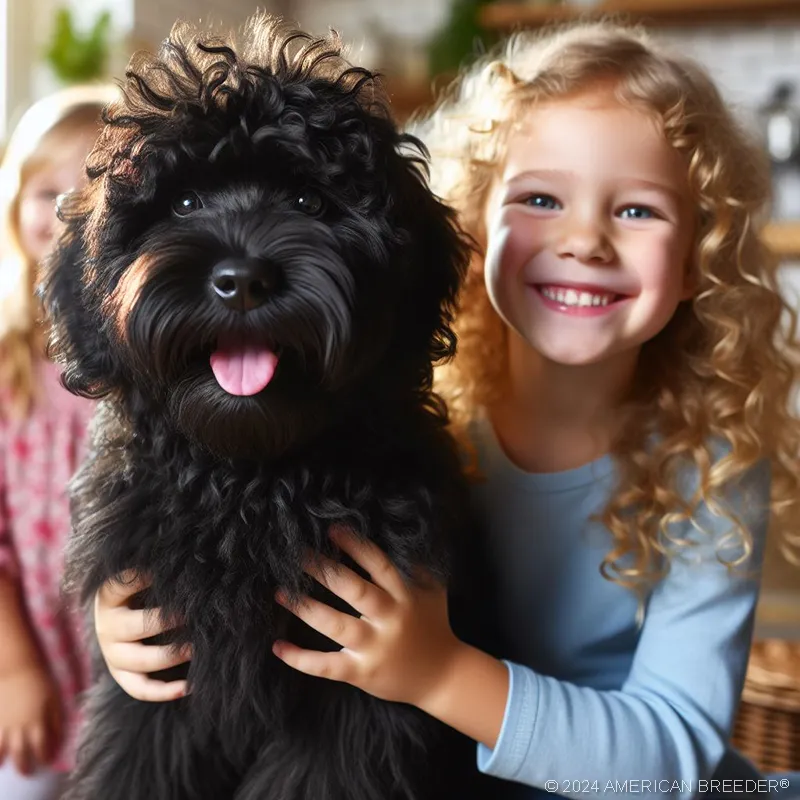 Welcome to the captivating world of the Barbet Dog! With its unique traits and endearing personality, the Barbet has captured the hearts of dog lovers around the globe. In this comprehensive guide, we will delve deep into the wonders of this incredible canine companion, uncovering its fascinating history, unrivaled temperament, and much more.
Welcome to the captivating world of the Barbet Dog! With its unique traits and endearing personality, the Barbet has captured the hearts of dog lovers around the globe. In this comprehensive guide, we will delve deep into the wonders of this incredible canine companion, uncovering its fascinating history, unrivaled temperament, and much more.
Brief Summary Description of the Barbet Dog
The Barbet Dog, also known as the French Water Dog, is a medium-sized breed renowned for its exceptional water-retrieving abilities and lush curly coat. With a gentle and affectionate nature, the Barbet makes an ideal family companion and excels in various canine sports and activities. Its distinctive appearance, coupled with its friendly demeanor, has earned the Barbet a special place in the hearts of dog enthusiasts worldwide.
Considerations Before Choosing the Barbet Dog
Before bringing a Barbet into your life, it's essential to consider various factors to ensure a harmonious bond with your new furry friend. The breed's energy level, exercise needs, grooming requirements, and compatibility with your lifestyle are critical aspects to ponder. The Barbet thrives on love, attention, and mental stimulation, making it an ideal match for active individuals or families seeking a devoted and agile companion.
Interesting Facts and Fun Facts about the Barbet Dog
Other Names for the Barbet Dog: Aside from being known as the "French Water Dog," the Barbet is also called the "Muddy Waters Dog" due to its affinity for water and mud during playtime and work.
Nicknames for the Barbet: Barbet enthusiasts often fondly refer to their canine friends as "Barbies" or "Water Hounds."
Breed Background and History
The Barbet Dog's roots trace back to ancient times, where it played an integral role as a skilled water retriever. Let's embark on a journey through time to explore the breed's captivating history and its significance in various cultures.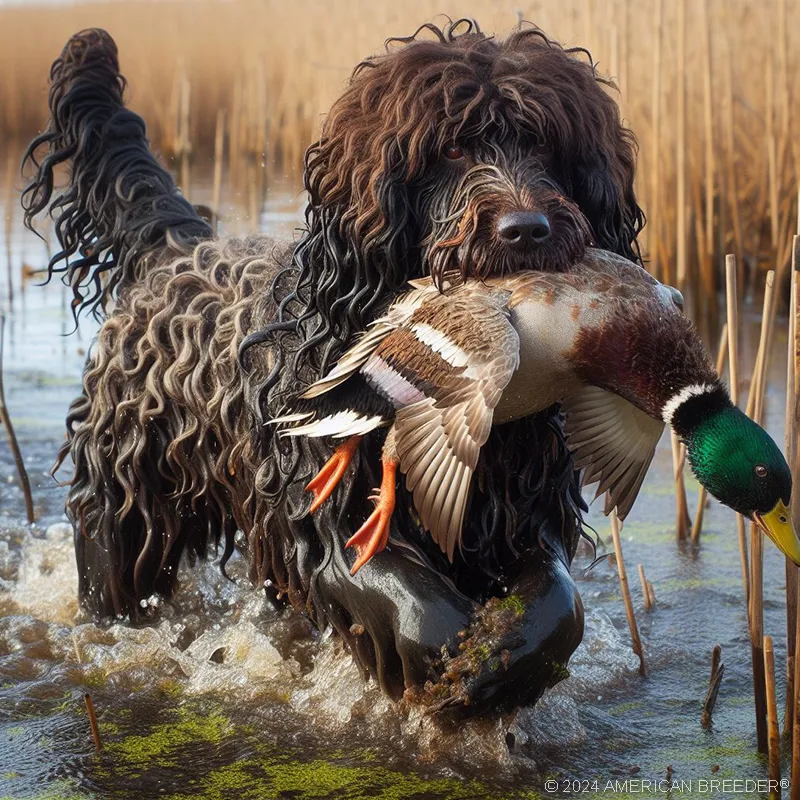 Origin and Development of the Barbet Dog
Origin and Development of the Barbet Dog
The Barbet's history dates back to the Middle Ages in France, where it served as a versatile working dog on boats and in the marshlands. Its name "Barbet" is derived from the French word "barbe," meaning beard, which is fitting given its distinctive facial hair. The breed's excellent swimming and retrieving abilities made it invaluable to fishermen, hunters, and waterfowlers.
Historical Significance or Cultural Relevance
Throughout history, the Barbet Dog held a significant place in French culture and was widely revered for its versatility and loyalty. It was commonly seen accompanying sailors and traders on maritime expeditions, earning a reputation as an indispensable working companion.
Purpose or Original Use of the Barbet Dog
The Barbet's primary purpose was water retrieving, making it an invaluable asset for retrieving waterfowl and fishing nets. Its exceptional swimming abilities and waterproof coat made it well-suited for this demanding role.
Kennel Clubs that Classify, Group, or Register the Barbet Dog
The American Kennel Club (AKC) recognized the Barbet as a member of the Sporting Group in 2021. Other kennel clubs, such as the United Kennel Club (UKC) and the Fédération Cynologique Internationale (FCI), also classify and register the breed, further solidifying its status as a beloved and recognized canine breed worldwide.
Appearance
One cannot help but be captivated by the Barbet Dog's distinctive appearance. From its curly coat to its friendly eyes, the Barbet exudes charm and elegance. Let's take a closer look at its size, weight, coat type, colors, and distinctive features.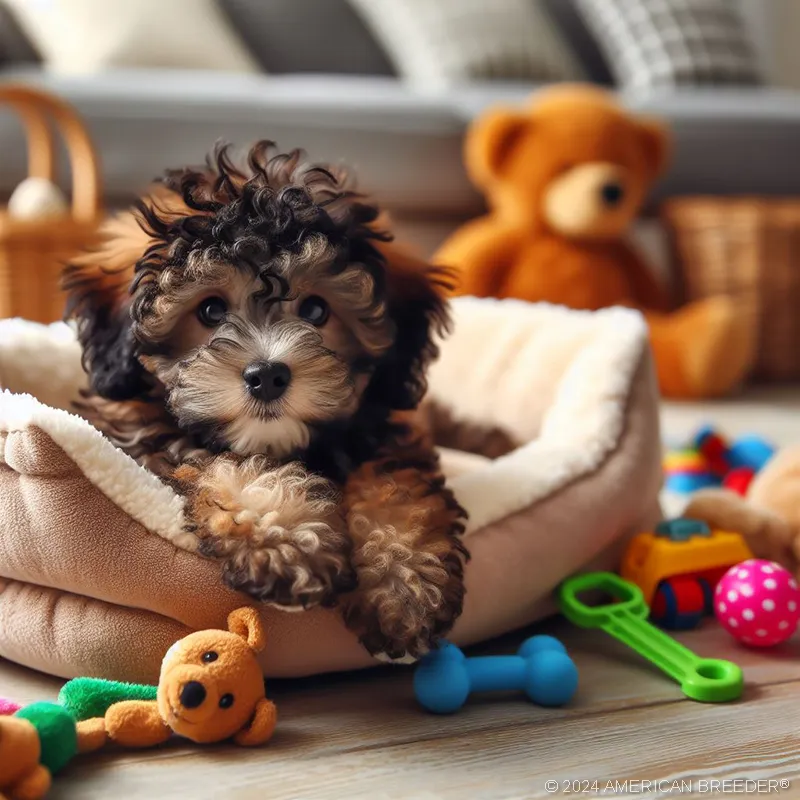 Size, Weight, Activity Level, and Physical Appearance
Size, Weight, Activity Level, and Physical Appearance
The Barbet is a medium-sized breed, typically weighing between 35 to 65 pounds and standing around 20 to 25 inches at the shoulder. Its well-muscled body and strong legs are perfectly designed for agility and endurance. Its overall appearance is that of a robust and active dog, ready to take on any task.
Coat Type, Color Variations, and Patterns
One of the Barbet Dog's most remarkable features is its dense, curly, and waterproof coat. This unique coat protects it during its water-retrieving tasks and adds to its charming appearance. The Barbet comes in a variety of solid colors, including black, brown, gray, and fawn, with or without white markings.
Distinctive Features or Markings
The Barbet's distinctive features include its long, woolly ears that hang close to its cheeks, giving it a charming and endearing expression. Its webbed feet are a remarkable adaptation that enhances its swimming prowess, making it an exceptional water dog.
Average Litter Size for the Barbet Dog
Barbet litters typically consist of 4 to 8 puppies, depending on the specific breeding and genetics of the parent dogs. The breed's maternal instincts make it an attentive and caring mother, ensuring the healthy development of its offspring.
Temperament and Personality
The Barbet Dog's temperament is a delightful blend of intelligence, friendliness, and affection. Its gentle and loving nature makes it a cherished family pet, while its inherent enthusiasm and intelligence make it an eager learner in various training and activity settings.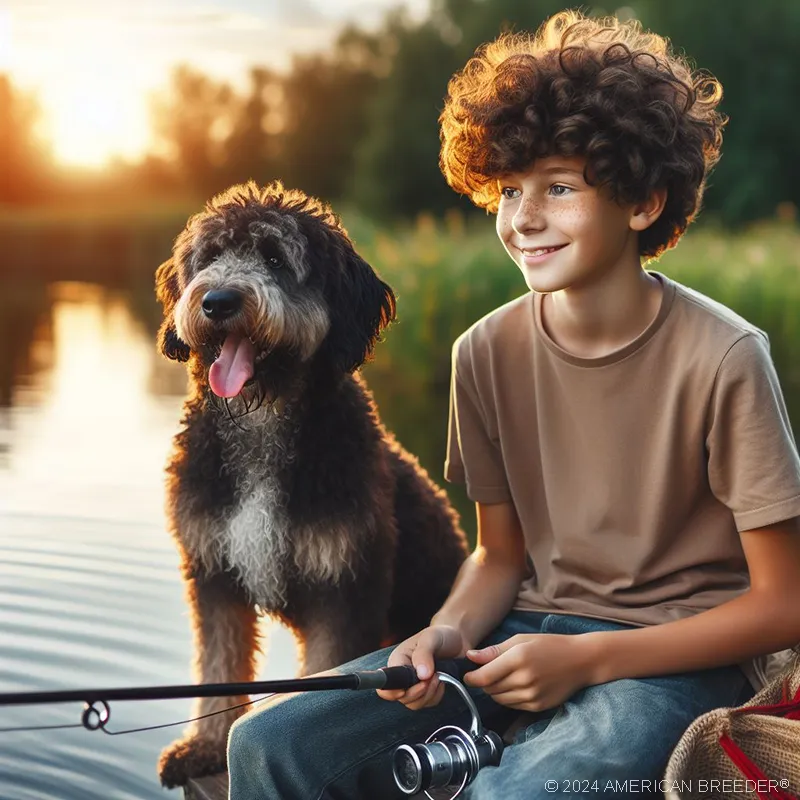 Typical Temperament Traits and Behavior Tendencies
Typical Temperament Traits and Behavior Tendencies
The Barbet is known for its amiability and amiableness. It is a social and friendly breed that thrives on human interaction and companionship. This breed forms strong bonds with its family and is often referred to as a "Velcro dog" due to its desire to be close to its loved ones at all times.
Energy Levels and Activity Requirements
While the Barbet has moderate energy levels, it does require regular physical and mental stimulation to stay content and well-behaved. Engaging in outdoor activities and water play, such as swimming, is particularly rewarding for this water-loving breed.
Compatibility with Different Lifestyles and Family Dynamics
The Barbet's adaptability makes it well-suited for various lifestyles and family dynamics. It is equally content in an active family with children or in a quieter household with adults. Its friendly nature extends to other pets, making it an excellent addition to multi-pet households.
List of Typical Behavior Issues
Aggression and Biting: The Barbet is not known for aggression, but like any dog, it may display territorial behavior if not properly socialized and trained.
Excessive Barking: The Barbet may bark to alert its family, but this behavior can be managed through consistent training and appropriate mental stimulation.
Digging Behavior: Digging can be a natural behavior for the Barbet, but redirecting this energy towards play and exploration can curb excessive digging.
Separation Anxiety: The Barbet thrives on human interaction, making it susceptible to separation anxiety when left alone for extended periods. Early training and gradual departures can help alleviate this issue.
Resource Guarding: Some Barbet dogs may display resource guarding tendencies, which can be addressed through positive reinforcement training and desensitization exercises.
Fear and Phobias: Proper socialization during puppyhood can help the Barbet develop confidence and reduce the likelihood of fear-based behaviors.
Trainability and Intelligence
The Barbet Dog's trainability and intelligence are key factors that contribute to its versatility and popularity as a companion. Its innate willingness to please and quick learning abilities make it an excellent student in various training endeavors.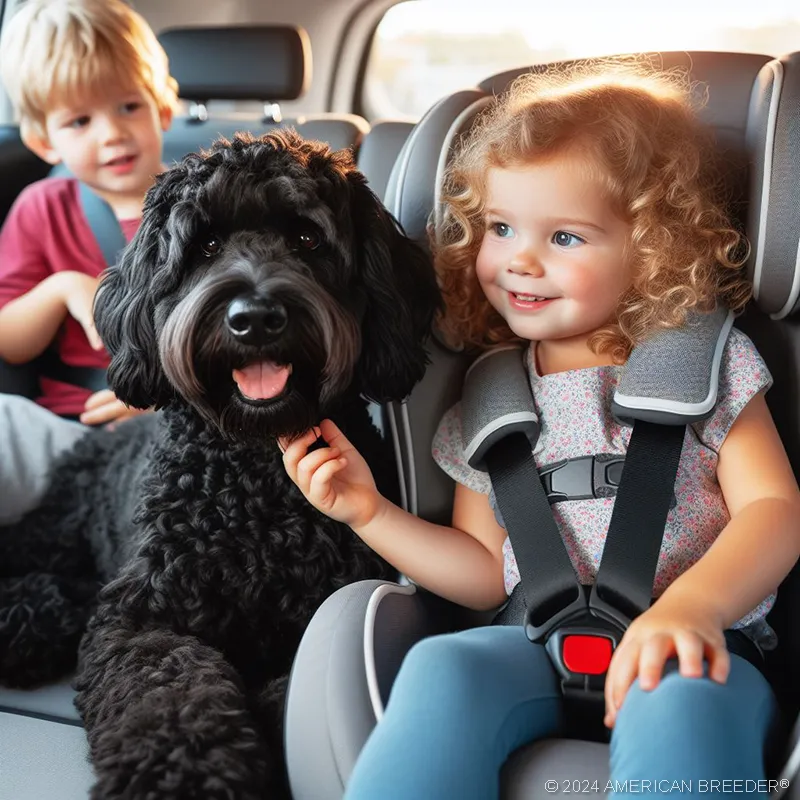 Trainability Level and Ease of Learning
Trainability Level and Ease of Learning
The Barbet's trainability is rated high, with an eagerness to please its owners and an innate ability to pick up commands quickly. Its intelligence and ability to comprehend complex tasks make training sessions enjoyable and rewarding for both the dog and the owner.
Willingness to Please Their Owner
The Barbet's strong bond with its family fosters a deep desire to please its owner. This willingness to please, coupled with positive reinforcement training methods, ensures a harmonious and cooperative training experience.
Intelligence and Problem-Solving Abilities
The Barbet ranks high on the intelligence scale, showcasing exceptional problem-solving abilities. Its capacity to understand and adapt to new situations allows it to excel in various activities, including dog sports and obedience competitions.
Recommended Training Approaches and Techniques
Positive reinforcement training methods are highly recommended for the Barbet Dog. Reward-based training, using treats, praise, and affection, helps reinforce desired behaviors and builds a strong bond between the dog and its owner.
Training or Skills Best Suited for the Barbet Dog
The Barbet's aptitude for water-based activities and retrieving makes it an ideal candidate for training in water sports, such as dock diving and water-based obedience exercises. Additionally, its athleticism and agility lend themselves well to agility training, where it can showcase its speed and precision.
Practical Considerations
Owning a Barbet Dog comes with various practical considerations that potential owners should be aware of. From grooming needs to exercise requirements, understanding the breed's specific needs ensures a happy and healthy life for the dog.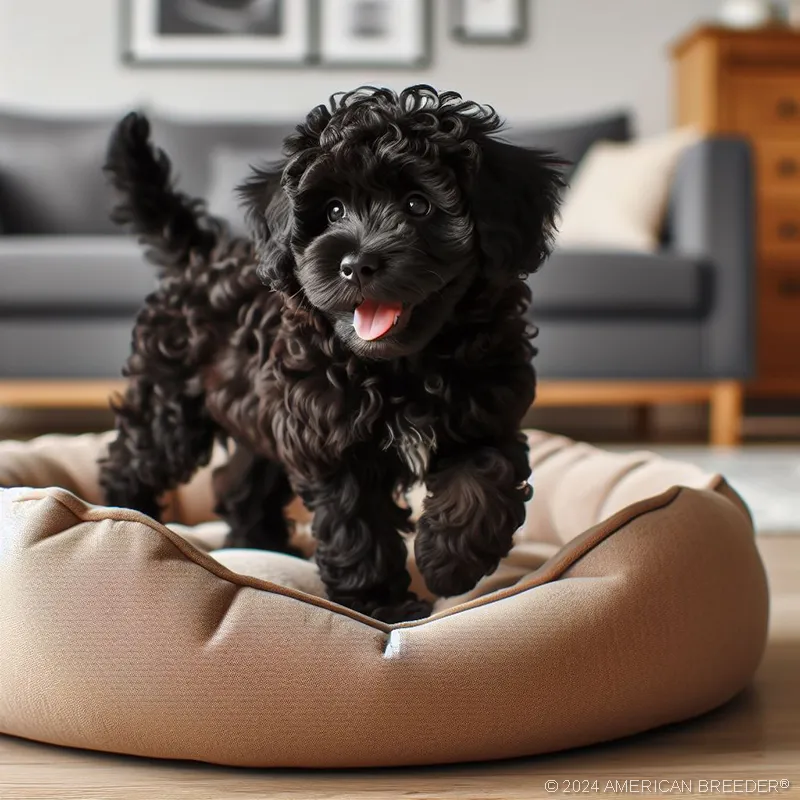 Size of Sleeping Quarters Depending on Size
Size of Sleeping Quarters Depending on Size
The Barbet's medium size requires ample space to rest and relax. Providing a cozy and comfortable bed or crate allows the dog to have a safe and restful sleeping area.
Typical Annual Veterinary Cost
The annual veterinary costs for a Barbet Dog can vary depending on factors such as age, health condition, and location. Regular check-ups, vaccinations, and preventive care are essential to maintain the dog's well-being.
Type of Grooming and Annual Cost
The Barbet's curly coat requires regular grooming to prevent matting and maintain its water-resistant properties. Professional grooming or regular at-home grooming may be necessary, depending on the owner's preferences and skill level. The annual grooming cost should be budgeted accordingly.
Daily Exercise Needs and Requirements
The Barbet's moderate energy level requires daily exercise to stay healthy and happy. Regular walks, playtime, and mental stimulation activities are crucial for meeting its exercise needs.
Level of Playfulness
The Barbet's playful nature makes it a fun-loving companion, always ready for games and activities with its family.
Level of Intelligence
The Barbet's high intelligence contributes to its adaptability and problem-solving abilities, making it an engaging and interactive companion.
Affection Level and Desired Attention
The Barbet's affectionate and loyal nature fosters a strong bond with its family, making it a loving and devoted pet.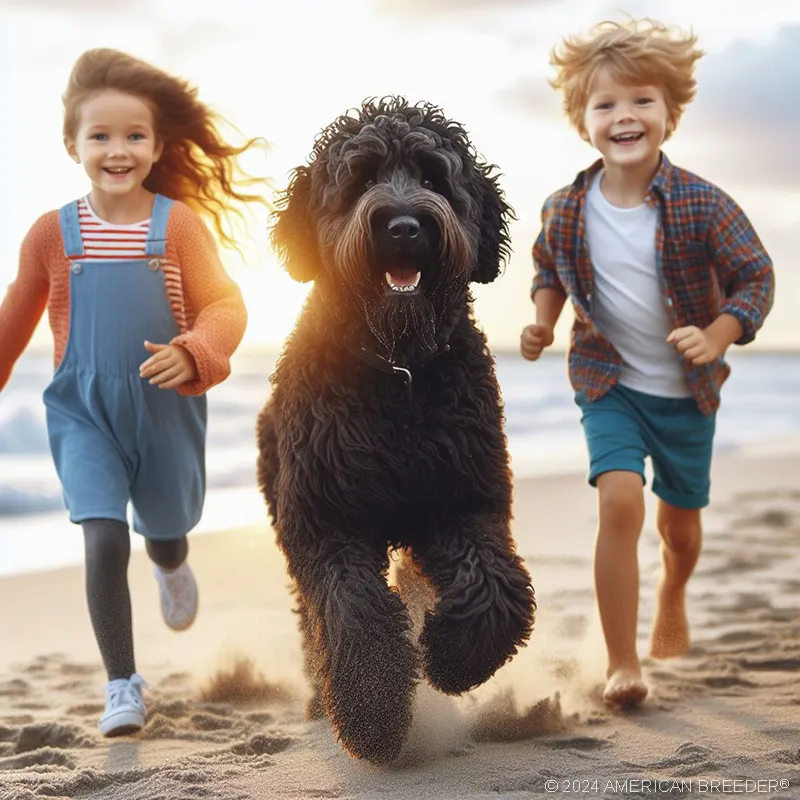 Friendliness Toward Strangers
Friendliness Toward Strangers
While the Barbet is generally friendly, its reserved nature may lead to initial caution when encountering strangers. Early socialization can help promote positive interactions with unfamiliar people.
Grooming Needs and Frequency
Brushing: The Barbet's curly coat requires regular brushing to prevent matting and tangles. A slicker brush or comb is ideal for this purpose.
Bathing: Bathing the Barbet should be done as needed, typically every 4-6 weeks, or when it becomes visibly dirty or odorous.
Nail Trimming: Regular nail trimming is essential to maintain the dog's paw health and comfort. Nail trimming should be done every 2-4 weeks, depending on the dog's activity level and nail growth.
Ear Cleaning: The Barbet's long, droopy ears should be checked and cleaned regularly to prevent ear infections.
Section J: Feeding Requirements and Dietary Considerations
Portion Sizes: The Barbet's portion sizes should be determined based on its age, weight, activity level, and individual metabolism. Consult with a veterinarian to establish a proper feeding plan.
Feeding Schedule: Adult Barbet dogs are typically fed twice a day, while puppies may require more frequent meals.
Recommended Dog Food Brands/Types: Choose high-quality dog food that meets the breed's nutritional needs, with a focus on balanced proteins, fats, and carbohydrates.
Treats and Dietary Restrictions: Treats can be given in moderation as rewards during training sessions, but avoid overindulging to maintain a healthy weight.
Health and Care
Ensuring the Barbet Dog's well-being is paramount for responsible owners. Understanding common health issues, preventive care, and proper nutrition are crucial for promoting a long and healthy life.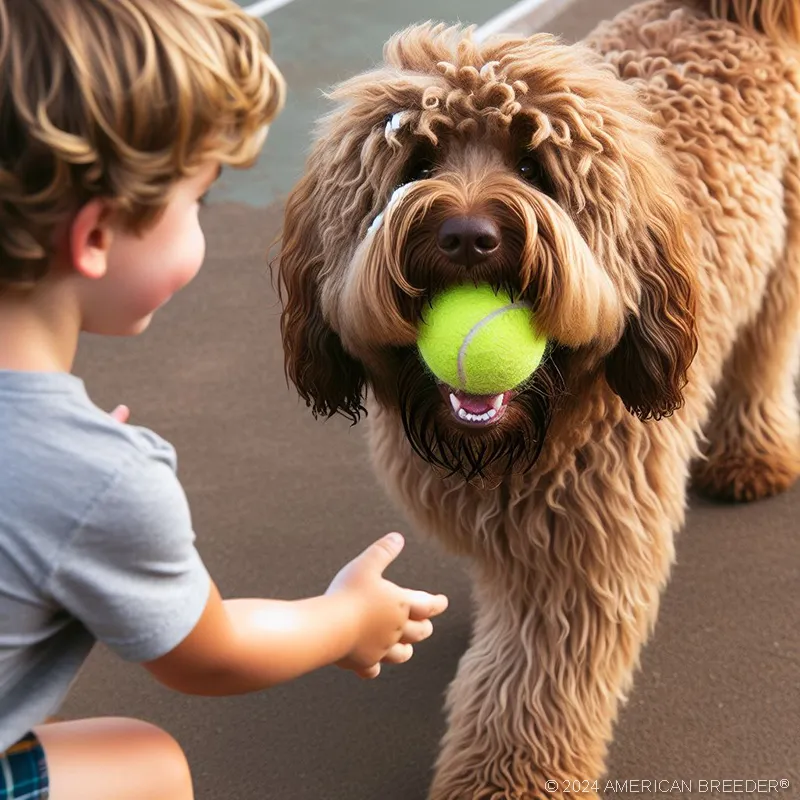 Common Health Issues or Predispositions of the Barbet Dog
Common Health Issues or Predispositions of the Barbet Dog
While the Barbet is generally a healthy breed, it may be susceptible to certain health issues, including:
Hip Dysplasia: A genetic condition that affects the hip joint's development, potentially leading to pain and mobility issues.
Eye Conditions: Cataracts and progressive retinal atrophy (PRA) are among the eye conditions that can affect the Barbet's vision.
Allergies and Specific Dietary Considerations
The Barbet may be prone to food allergies, making it essential to identify and avoid allergenic ingredients in its diet.
Lifespan and Longevity Expectations
With proper care and attention to health, the Barbet can have a lifespan of 12 to 15 years, providing years of companionship and joy to its owners.
Grooming Requirements Based on Coat Type and Size
Regular grooming is essential to maintain the Barbet's curly coat and prevent matting. Professional grooming or consistent at-home grooming can ensure the dog's coat remains in optimal condition.
Exercise Needs and Recommendations for Physical and Mental Stimulation
The Barbet's moderate energy level necessitates regular exercise and mental stimulation to prevent boredom and promote overall well-being.
Nutrition and Feeding Guidelines
Providing a balanced and nutritious diet is crucial for the Barbet's overall health and vitality. Consult with a veterinarian to determine the appropriate diet based on the dog's age, weight, and activity level.
Vaccination Schedule and Preventive Care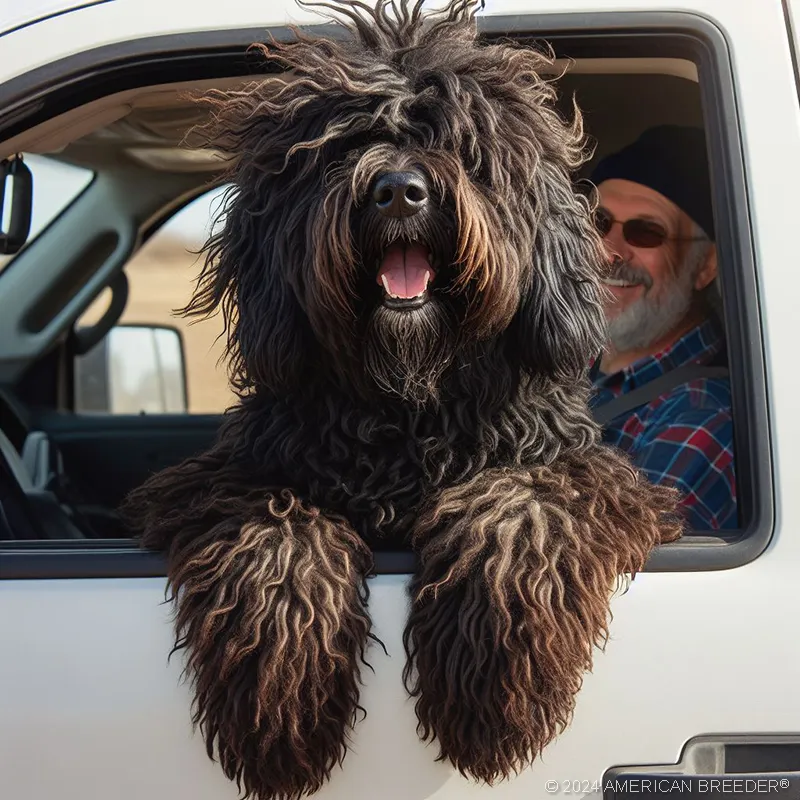 Core Vaccines: The Barbet should receive core vaccinations, including rabies, distemper, parvovirus, and adenovirus, to protect against common canine diseases.
Core Vaccines: The Barbet should receive core vaccinations, including rabies, distemper, parvovirus, and adenovirus, to protect against common canine diseases.
Non-Core Vaccines: Depending on the dog's lifestyle and risk factors, non-core vaccines, such as canine influenza and Lyme disease, may also be recommended.
Flea and Tick Prevention: Regular use of flea and tick preventatives is crucial for protecting the Barbet from external parasites.
Heartworm Prevention: Administering heartworm preventatives as directed by a veterinarian is essential for protecting the dog from this potentially deadly parasitic infection.
Regular Health Check-ups and Vet Visits
Routine veterinary check-ups are essential for monitoring the Barbet Dog's overall health and catching any potential health issues early. Regular visits to the veterinarian ensure timely vaccinations, dental care, and preventive measures to maintain the dog's well-being.
Signs of Potential Health Problems and When to Seek Veterinary Attention
Being attuned to signs of discomfort or changes in behavior is crucial for identifying potential health problems. If the Barbet displays any abnormal symptoms, such as lethargy, loss of appetite, or lameness, prompt veterinary attention is necessary.
Socialization and Compatibility
The Barbet Dog's friendly and social nature makes it an excellent companion for families, children, and other pets. Proper socialization during puppyhood is vital for shaping a well-adjusted and confident adult dog.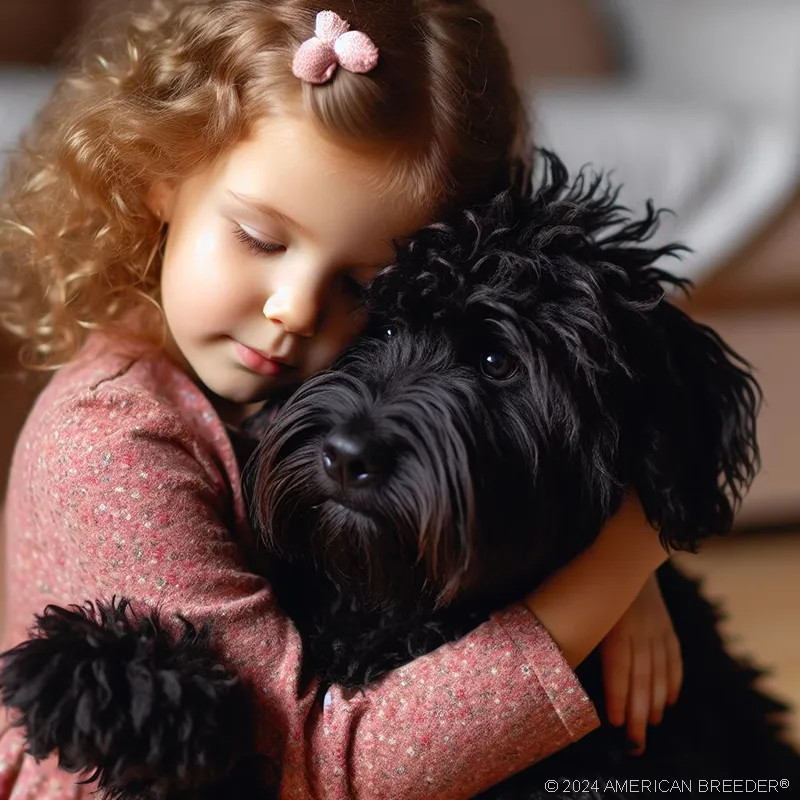 Interaction with Children, Other Pets, and Strangers
Interaction with Children, Other Pets, and Strangers
The Barbet's gentle disposition makes it great with children and a wonderful family pet. Early socialization helps ensure positive interactions with other pets and strangers.
Socialization Needs and Tips for Proper Socialization
Exposing the Barbet to various people, places, and experiences during puppyhood helps build its confidence and reduces the likelihood of fear-based behaviors. Positive reinforcement during socialization promotes a well-rounded and sociable adult dog.
Precautions or Considerations for Multi-Dog Households
Introducing a new Barbet into a multi-dog household should be done gradually and with supervision. Each dog's personality and compatibility should be taken into account to foster a harmonious pack dynamic.
Level of Ease When It Comes to Training the Barbet Dog
The Barbet's intelligence and willingness to please its owner make it relatively easy to train. Consistent and positive training methods will yield excellent results with this eager-to-learn breed.
Playtime and Exercise with Other Dogs or Pets
The Barbet enjoys playtime and physical activities with other dogs or pets. Group play sessions and off-leash interactions in a safe environment can strengthen social bonds among furry friends.
Dog-Friendly Activities and Outings
The Barbet's love for water makes it an ideal companion for beach outings, lake adventures, and swimming activities. It also enjoys hiking and other outdoor adventures with its family.
Living Arrangements and Environment
The Barbet Dog adapts well to various living arrangements, but certain factors should be considered to provide the best living environment for this water-loving breed.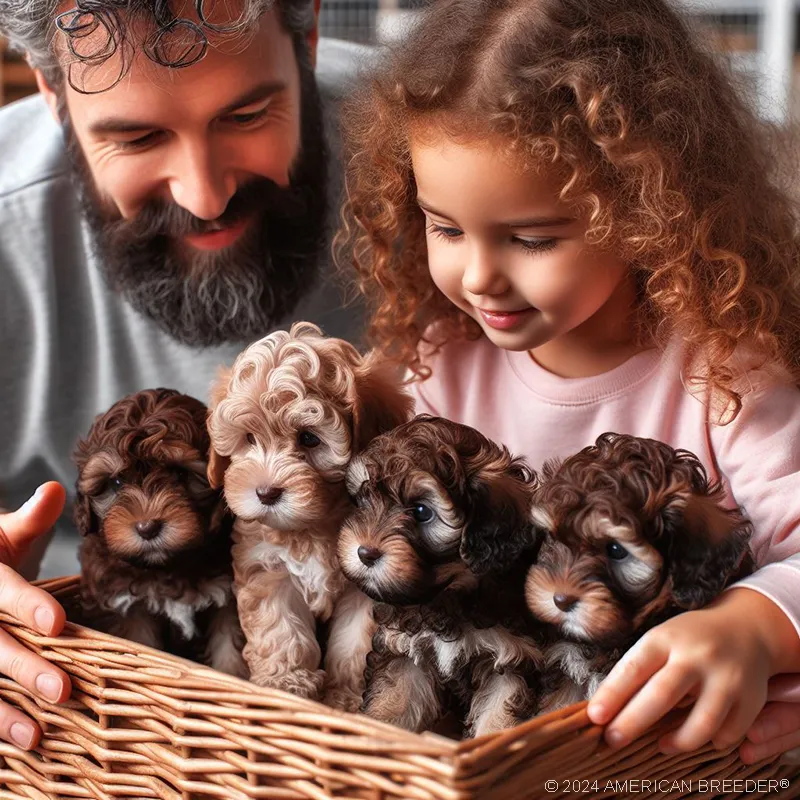 Different Living Arrangements
Different Living Arrangements
The Barbet is adaptable to different living arrangements, including apartments, houses, and rural areas. However, access to outdoor spaces for exercise and water activities is beneficial for its well-being.
Space Requirements and Exercise Options
Living in a house with a fenced yard or proximity to water sources allows the Barbet to engage in its favorite water-retrieving activities. Adequate space for play and exercise is essential for its health and happiness.
Climate Considerations and Adaptability
The Barbet's waterproof coat provides some insulation against cold weather, but it may struggle in extremely hot climates. Adequate shelter and access to water during hot weather are essential for its comfort and safety.
Recommended Yard Size for the Barbet Dog
A yard size that allows for ample space to play, run, and engage in water activities is ideal for the Barbet. A medium-sized yard with room for outdoor play is sufficient for meeting its exercise needs.
Ideal Living Conditions and Environment
The ideal living conditions for the Barbet involve a loving and active family environment with opportunities for outdoor activities and water play. Access to water sources, such as a pool or lake, enhances the breed's natural instincts and happiness.
Training and Obedience
The Barbet Dog's intelligence and trainability make it an excellent candidate for various training endeavors. Proper training and obedience are essential for a well-mannered and well-adjusted companion. Basic Obedience Training and Commands
Basic Obedience Training and Commands
Teaching the Barbet basic obedience commands such as sit, stay, come, and heel lays the foundation for a well-behaved dog. Consistent and positive reinforcement during training sessions ensures successful learning.
Advanced Training or Specialized Activities Suited for the Barbet Dog
The Barbet excels in advanced training activities such as agility, dock diving, and water-based retrieval sports. Its athleticism and love for water make it an exceptional competitor in these specialized activities.
Behavioral Challenges or Specific Training Considerations
Although generally well-mannered, the Barbet may exhibit certain behavioral challenges. Proper training and early socialization can address these issues and promote a confident and obedient adult dog.
House Training and Potty Training Tips
Consistent and positive reinforcement is essential for successful house and potty training. Establishing a regular schedule and providing ample opportunities for outdoor breaks are key to successful training.
Leash Training and Walking Etiquette
Leash training is crucial to ensure the Barbet walks calmly and politely without pulling or displaying leash-reactive behavior. Using positive reinforcement and rewards during leash training helps instill good walking etiquette in the Barbet.
Exercise and Activity
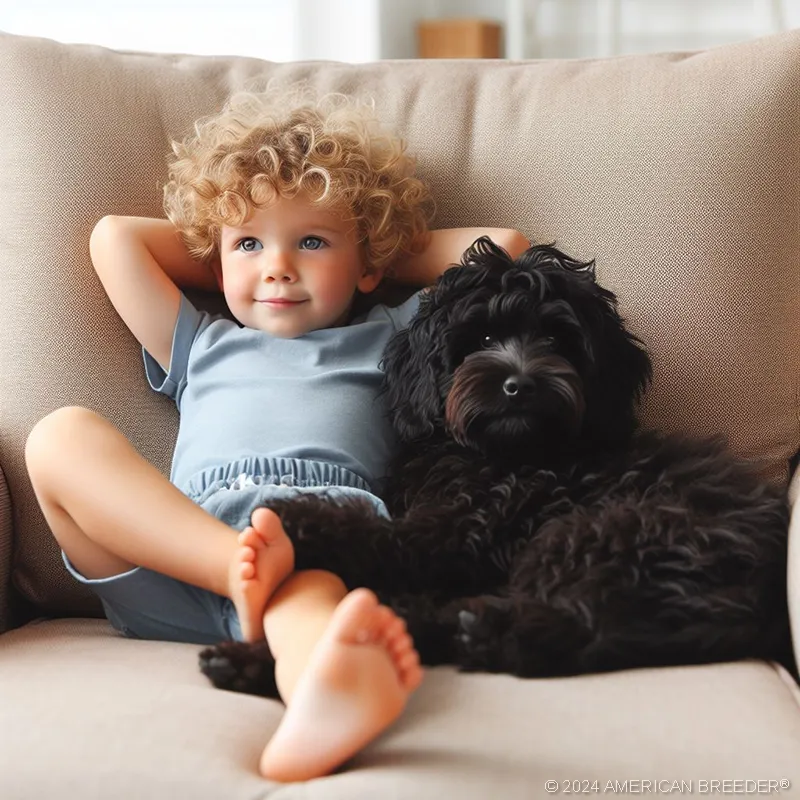 The Barbet Dog's moderate energy level requires regular exercise to maintain its physical and mental well-being. Engaging in various activities helps keep this intelligent and agile breed happy and content.
The Barbet Dog's moderate energy level requires regular exercise to maintain its physical and mental well-being. Engaging in various activities helps keep this intelligent and agile breed happy and content.
Daily Exercise Needs and Recommendations
The Barbet requires at least 60 minutes of exercise per day to expend its energy and prevent boredom. A mix of physical activities, such as walks, runs, and fetch games, and mental stimulation through training and puzzle toys keeps the Barbet mentally and physically fit.
Mental Stimulation Activities and Games
The Barbet's intelligence and problem-solving abilities can be engaged through mental stimulation activities and games. Puzzle toys, scent games, and obedience training sessions challenge its mind and prevent behavioral issues due to boredom.
Exercise Routines and Activity Ideas
Incorporate a variety of exercise routines and activity ideas to keep the Barbet's routine exciting and dynamic. Water activities, agility training, and interactive play with other dogs are excellent ways to keep this breed engaged.
Energy Outlets for High-Energy Breeds
For Barbet Dogs with higher energy levels, offering additional outlets for energy expenditure is essential. Engage in water sports, flyball, or canine sports that cater to the Barbet's natural abilities and instincts.
Financial Planning
Owning a Barbet Dog comes with financial responsibilities, including initial costs and ongoing expenses. Planning for these costs ensures the dog receives proper care and attention.
Typical Price Range for Purchasing a Barbet Dog from Reputable Breeders
The price of a Barbet Dog from reputable breeders can range from $1500 to $2500, depending on factors such as the dog's lineage, health, and breeder's reputation.
Initial Costs (Adoption Fees or Purchase Price, Vaccinations, Spaying/Neutering, Microchipping)
Initial costs include the adoption or purchase fee, vaccinations, spaying or neutering, and microchipping. These essential expenses ensure the dog's health and well-being from the start.
Ongoing Expenses (Food, Grooming, Veterinary Care, Training, Toys, and Supplies)
Ongoing expenses for a Barbet Dog include high-quality dog food, grooming, veterinary care, training, toys, and other supplies. Budgeting for these recurring costs is crucial to provide the dog with a happy and healthy life.
Considerations for Pet Insurance or Budgeting for Unexpected Medical Costs
Pet insurance can offer financial security in case of unexpected medical emergencies or accidents. Alternatively, setting aside funds for potential medical expenses ensures that the Barbet receives timely and adequate veterinary care when needed.
Options for Pet Care During Vacations or Travel
Planning for pet care during vacations or travel is essential. Whether hiring a professional pet sitter, using a boarding facility, or relying on trusted family or friends, ensuring the Barbet's safety and comfort during your absence is crucial.
Overall Summary
Concise and Cohesive Summary of Key Details in Bullet-Point Format
The Barbet Dog is a friendly, intelligent, and water-loving breed known for its curly coat and exceptional retrieving abilities.
Potential owners should consider their ability to provide regular exercise, grooming, and mental stimulation to meet the breed's needs.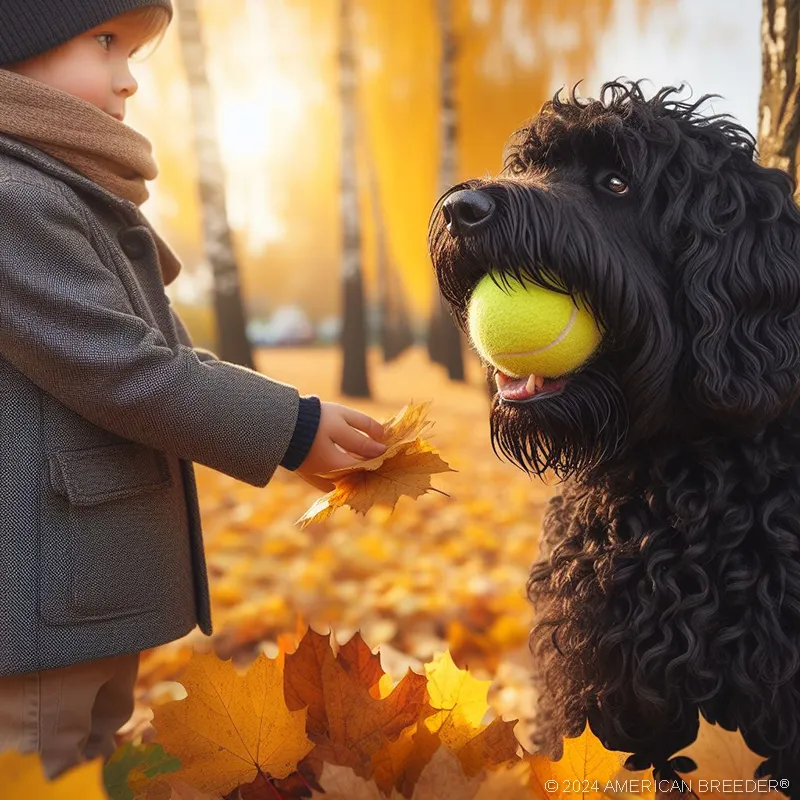 Training the Barbet with positive reinforcement enhances its cooperative and obedient nature.
Training the Barbet with positive reinforcement enhances its cooperative and obedient nature.
Responsible ownership involves research, ethical considerations, and a lifetime commitment to the dog's well-being.
Highlight Interesting and Fun Facts about the Barbet Dog
The Barbet is one of the oldest water dog breeds, with roots dating back to the Middle Ages.
Its name "Barbet" comes from the French word "barbe," meaning "beard," referencing its distinctive facial hair.
The Barbet's waterproof coat is ideal for water activities and makes it a skilled swimmer and retriever.
Capture the Breed's Unique Characteristics and Appeal
The Barbet's combination of intelligence, playfulness, and loyalty makes it a versatile and devoted companion for families and individuals alike. Its water-loving nature and athleticism offer endless opportunities for fun and engaging activities, making it an excellent choice for active individuals or families with outdoor lifestyles. Its gentle and affectionate demeanor also makes it an ideal therapy or service dog, providing comfort and support to those in need.
Create Excitement and Enthusiasm for Potential Dog Owners
Prospective Barbet owners can look forward to a loving and loyal companion that thrives in an active and stimulating environment. The breed's unique history, versatile abilities, and friendly temperament make it an extraordinary addition to any family. Emphasizing the joys of water play and outdoor adventures with this charming and intelligent breed can ignite excitement in potential dog owners who are seeking a devoted and active canine companion.
Conclusion
Summary of Key Information and Considerations for the Barbet Dog
The Barbet Dog is a remarkable and versatile breed with a rich history as a skilled water retriever. Its friendly and affectionate nature, combined with its intelligence and trainability, makes it an ideal family pet and a wonderful therapy or service dog.
Encouragement to Continue Learning and Seeking Expert Guidance
As potential or current Barbet Dog owners, your journey with this exceptional breed is just beginning. Continue to educate yourself on the breed's unique characteristics, needs, and care requirements. Seek guidance from experienced breeders, trainers, and veterinarians to provide the best possible life for your beloved Barbet.
Emphasis on Responsible Ownership, Commitment, and Providing a Loving, Suitable Home for a Dog
Owning a Barbet Dog is a privilege and a commitment. Remember to approach ownership with responsibility, ensuring that your dog's health, happiness, and well-being are top priorities. Providing a loving, suitable home where your Barbet can thrive and be cherished is a testament to the special bond between humans and dogs.
In conclusion, the Barbet Dog is a fascinating and exceptional breed with a storied past and a bright future as a beloved family member and companion. Its versatility, intelligence, and friendly disposition make it an ideal choice for active individuals or families seeking a loyal and water-loving canine companion. With proper training, care, and attention, the Barbet will reward its owners with years of love, loyalty, and endless adventures in the great outdoors. As you embark on your journey with this remarkable breed, may you find joy and fulfillment in the companionship of your Barbet Dog and may your bond grow stronger with each passing day. Here's to a lifetime of cherished memories with your devoted and delightful Barbet by your side.
Barbet Dog Quick Reference Guide
Breed Background: Origin: France | Breed Purpose: Water retrieving | AKC Class: Sporting | Year Recognized by AKC: 2021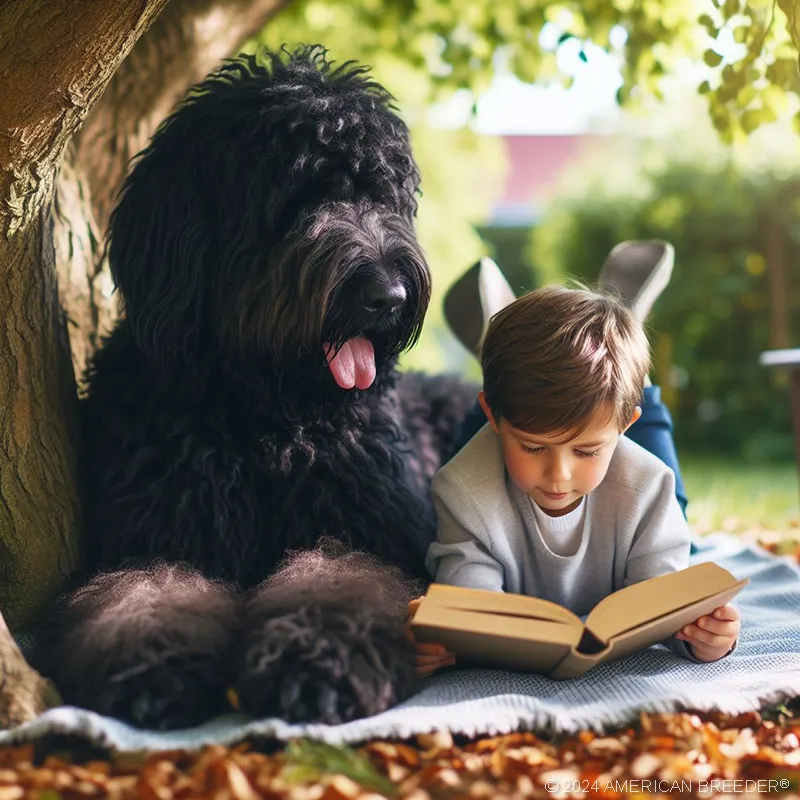 Appearance: Size: Medium | Weight: 35-65 pounds | Coat Type: Curly, dense | Colors & Patterns: Solid colors (e.g., black, brown, fawn) | Distinctive Features: Long, woolly ears, and webbed feet
Appearance: Size: Medium | Weight: 35-65 pounds | Coat Type: Curly, dense | Colors & Patterns: Solid colors (e.g., black, brown, fawn) | Distinctive Features: Long, woolly ears, and webbed feet
Temperament: Energy Level: 3 | Friendliness to Pets: 4 | Friendliness to Strangers: 3 | Trainability: 4 | Playfulness: 4 | Frequent Barker: 2 | Chase Instincts: 3 | Sense of Smell: 4 | Drive to Hunt: 3
Health & Care: Health Issues: Hip dysplasia, eye conditions | Lifespan: 12-15 years | Grooming Difficulty: Moderate | Exercise Needs: Moderate to high
Socialization: Interaction with Children: Good, gentle | Interaction with Pets: Generally friendly | Interaction with Strangers: Reserved but polite | Ease of Training: Easy
Suitable Living Arrangements: Apartment: No | House: Yes | Rural Area: Yes | Yard Size Requirements: Medium to large
Training & Obedience: Trainability: 4 (Easy) | Intelligence: 4 (High) | Obedience: 4 (High) | Problem-Solving: 3 (Limited) | Easily Stimulated: 3 (Moderate) | Focus Level: 4 (High) | Easily Distracted: 2 (Low)
Financial Planning: Typical Price Range: $1,500 - $3,000 | Initial Expenses: Puppy vaccinations, supplies | Ongoing Annual Expenses: Food, vet visits
Breeding: Reproductive Maturity: 12-24 months | Litter Frequency: 1-2 per year | Litter Size: 4-8 puppies | Stud Cost: $800 - $2,000 | Breeding Challenges: Whelping difficulties are possible
Did You Enjoy this Article? Share it and Help Us Spread the Word!
If you found this article helpful, we'd appreciate it if you could share it with your friends or link to it from your website, blog, or group! You can also use the convenient social share tabs on the left side of the screen to instantly share this page to your social media feed. For more ways to support and promote the American Breeder Community, visit our Share & Promote Together page for social media posts and memes you can copy and share. Your support means the world to us!
Disclaimer: The information provided in this article is for general informational purposes only and does not constitute legal, medical, financial, or professional advice. While we strive for accuracy, we make no representations or warranties regarding the completeness, accuracy, reliability, or suitability of the information. Please consult with a professional before making decisions based on the content provided. American Breeder Inc. assumes no responsibility for any errors or omissions or for the results obtained from the use of this information.
